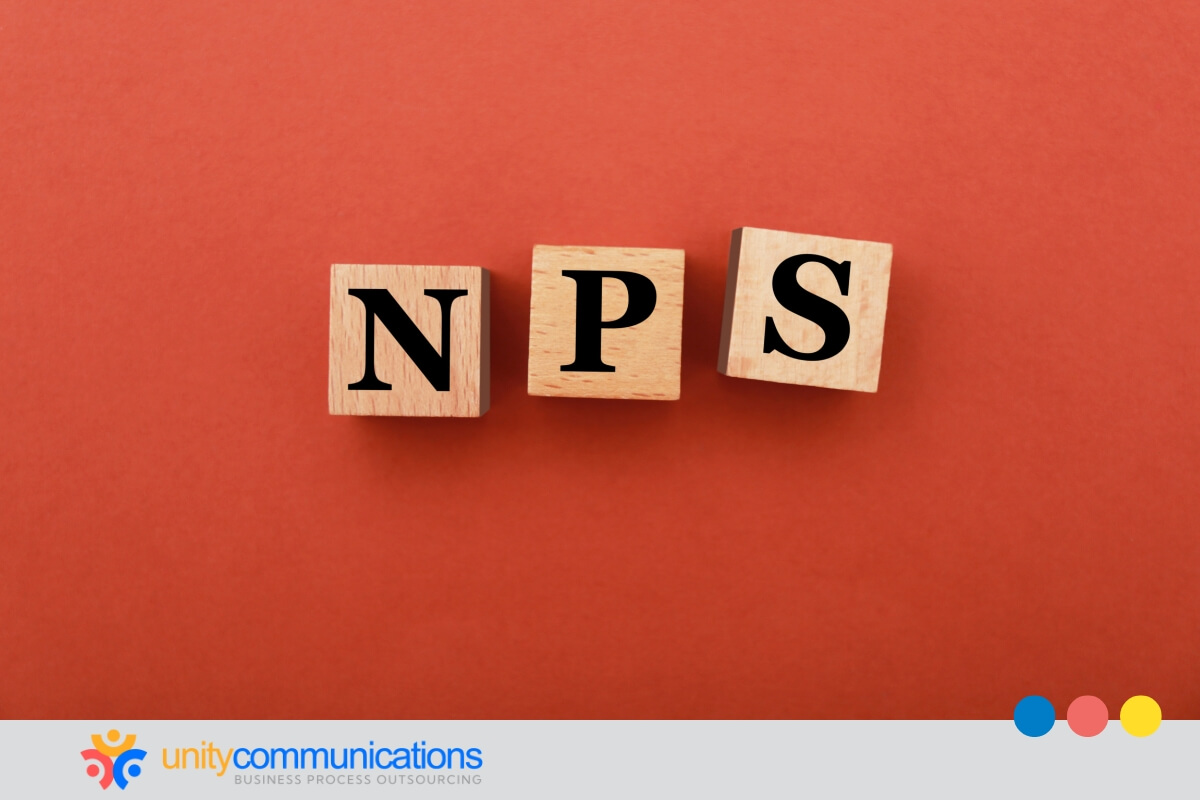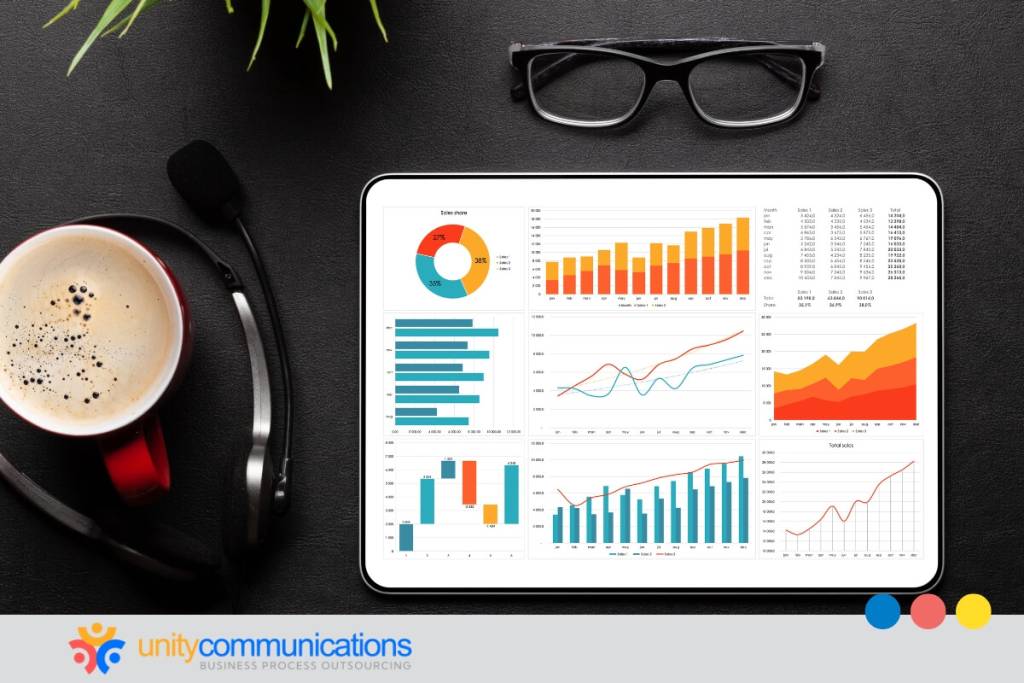Table of Contents
Companies across industries increasingly leverage business process outsourcing (BPO) to optimize costs, enhance efficiency, improve scalability, and drive innovation. However, measuring the third-party team’s performance is crucial in determining whether it has achieved the partnership’s objectives.
This article explores how to measure BPO performance, highlighting the key metrics to evaluate. Regularly monitoring and assessing these metrics helps identify improvement areas, align expectations, and maintain a strong partnership with outsourcing vendors. Keep reading to learn more!
Significance of measuring BPO performance

What is BPO performance? It refers to the overall effectiveness and efficiency of BPO services. Many factors determine BPO performance, including service quality, cost-effectiveness, delivery time, and customer satisfaction.
Measuring BPO performance is significant for the following reasons:
- Businesses can determine whether a BPO provider achieves their goals and adds to their overall success.
- Examining performance metrics helps identify bottlenecks and inefficiencies and pinpoint areas that need improvement.
- Analyzing the effectiveness of various BPO services to optimize resource allocation prevents overspending.
- Precise performance data shows how BPO expenditures benefit the company.
Key metrics: how to measure BPO performance

Key performance indicators (KPI) vary depending on the company, industry, and job type. Hence, businesses must focus on relevant metrics to effectively measure BPO performance and guarantee optimal outcomes.
The following provides insights into the BPO partnership’s success and helps align the provider’s performance with your strategic goals:
1. Customer satisfaction (CSAT) scores
Customer satisfaction (CSAT) indicates clients’ satisfaction level after receiving certain services. Businesses calculate CSAT using feedback or survey forms to collect customers’ views on service-related areas. Observing customer service interactions also helps spot trends and possible areas for development.
Generally, a 75% to 85% CSAT score is good, while an above 90% score is exemplary. An upward trend indicates progress, regardless of your score. You can keep measuring success by setting benchmarks and tracking your progress regularly.
High CSAT scores encourage positive online reviews and referrals, drive new business, foster higher customer loyalty, increase revenue, and decrease churn. They also demonstrate the BPO service provider’s operational efficacy and service quality and build reputation. Lastly, CSAT data can pinpoint problem areas, streamline workflows, and improve client experience.
2. First call resolution (FCR) rates
First call resolution (FCR) is a crucial indicator of agent efficiency and the effectiveness of the BPO service. To measure FCR, track the percentage of customer issues resolved on the first call without further follow-up using call center software or manually recording call resolution data.
When BPO agents resolve client concerns during the first call, they increase customer satisfaction and strengthen loyalty to your company. Moreover, they reduce operating costs on follow-up calls and can receive more inquiries to boost their productivity.
Meanwhile, repeat call rate (RCR) measures the frequency of calls required to fix a customer’s issue. Customers feel unhappy when making repeated calls to resolve problems, which might influence future purchases. Consequently, a higher FCR is ideal.
3. Average handle time (AHT)
Average handle time (AHT) measures agents’ minutes on each customer interaction. It includes the total time spent on the call, after-call work (ACW), and hold times. AHT is a key indicator of agent efficiency and overall BPO performance.
To calculate AHT, divide the time spent on calls, including ACW and hold times, by the number of calls handled.
The AHT benchmark for customer service calls is about 10 minutes, while industry standards fall between five and seven minutes for inbound customer service calls. A lower AHT allows agents to handle more calls in a shorter time.
Minimizing time spent on each call increases overall call volume and revenue while reducing operating costs. However, AHT can significantly vary based on call type and line of business.
4. Service-level agreement (SLA) compliance
Service level agreements (SLAs) are contractual obligations that define the performance standards a BPO provider must meet. They are benchmarks for measuring service quality and ensuring your BPO partner fulfills contractual commitments.
To measure SLA compliance, track adherence to specific metrics outlined in the contract, such as response times, availability, accuracy, and error rates, which vary depending on the type of agreement.
The three types of SLAs include:
- Customer SLA: An agreement between an organization and a third-party vendor providing a service, such as an office supply company or a design agency.
- Internal SLA: An agreement between teams within an organization, such as the sales team working with the marketing department to generate leads.
- Multi-level SLA: An agreement involving multiple parties, such as numerous vendors or various teams within an organization. For example, sales, marketing, and customer support departments collaborate to enhance customer satisfaction.
SLAs establish clear expectations between you and the BPO provider, reducing misunderstandings and disputes. They also provide a framework for evaluating the vendor’s performance against agreed-upon quality control standards.
Additionally, SLAs often include provisions for penalties or remedies in case of non-compliance, mitigating business risks. Moreover, these agreements can help identify areas for improvement and drive continuous enhancement of BPO services.
5. Agent utilization and productivity
Agent utilization and productivity refer to the BPO agents’ efficacy in handling customer interactions and maximizing their time. A high agent utilization and productivity score directly influences the efficiency and cost-effectiveness of the service.
Efficient agents can handle a higher call volume while minimizing idle time, which can help reduce the need for additional agents and operating costs. They can also handle customer inquiries more quickly, boosting customer satisfaction.
How is productivity calculated in BPO? Here’s how to measure BPO performance, particularly agent utilization and productivity:
- Average talk time measures the average length of customer calls. A lower average talk time can indicate more efficient agent interactions.
- Idle time is the time agents spend not engaged with customers. High idle time indicates inefficient workload distribution and scheduling.
- Call volume per agent measures the number of calls each agent handles. A high call volume per agent can indicate efficient utilization.
- Schedule adherence measures how agents follow their scheduled breaks. Adherence can boost agent morale and help prevent burnout.
6. Average speed of answer (ASA)
The average speed of answer (ASA) measures how quickly a call center agent answers inbound calls from when callers enter the queue. To calculate ASA, divide the total hold time by the number of calls answered.
The standard goal is to answer 80% of calls within 20 seconds. A high ASA rate may indicate agents’ lack of training or call center understaffing. If the average talk time is low but the ASA is high, it suggests the call center doesn’t have enough agents to handle the call volumes.
7. Net Promoter Score (NPS)
Net promoter score (NPS) measures customers’ loyalty, satisfaction, and willingness to recommend your product or service to others. It’s calculated by subtracting the percentage of detractors from the percentage of promoters.
To determine NPS, ask customers how likely they are to recommend the service on a scale of 0–10, then categorize them into three client groups:
- Promoters (9–10): Loyal customers who recommend the product or service.
- Passives (7–8): Satisfied clients but not enthusiastic about recommending services.
- Detractors (0–6): Unhappy customers who are unlikely to recommend the product or service.
A high NPS often means higher market share, profitability, and customer retention. NPS helps identify detractors who might require additional attention and promoters likely to be repeat customers. It also offers a standard metric for BPO performance, if BPO services contribute to your product or service.
Among U.S. industries, department and specialty stores received the highest NPS of 56, followed by brokerage, investments, and hotels at 49 each. Meanwhile, internet service providers received the lowest score at -3. As such, NPS is also a practical indicator of your performance against industry benchmarks.
8. Customer effort score (CES)
Customer effort score (CES) measures customers’ effort to resolve their issues or achieve their goals when interacting with your company. It’s a valuable indicator for improving customer satisfaction through call center BPO. When conducting a CES survey, you can use the 1–10 scale, Likert scale, or Emoji scale.
For example, ask customers on a scale of 1–10 how easy it was to resolve their issues. A low CES of 1 to 3 is ideal because it indicates that customers easily interact with the company, while a high CES suggests that customers had difficulty resolving their issues.
In addition, a low CES is generally associated with increased customer satisfaction, loyalty and referral, and reduced churn. In fact, 91% of customers are more likely to make a referral after a positive, low-effort experience.
9. Call abandonment rate
The call abandonment rate is the percentage of disconnected calls by customers before an agent gets to answer. It’s a crucial metric that indicates customer dissatisfaction or frustration with the BPO service.
To measure the call abandonment rate, divide the number of abandoned calls by the total number of calls received. You can manually record call data or use call center software.
A high call abandonment rate means lost business since customers might seek service from competitors. Long wait times or issues in the interactive voice response (IVR) system menu and call queuing system can contribute to this. Additionally, abandoned calls can lead to increased costs due to lost revenue and the need for additional resources to handle missed calls.
10. Cost per contact
Cost per contact (CPC) measures the total cost of handling each customer interaction. It is calculated by dividing the total cost of BPO operations by the number of customer contacts, including relevant expenses such as salaries, wages, overhead, and technology costs.
CPC is a good indicator of a BPO service’s cost-effectiveness and efficiency. A lower CPC means the BPO provider incurs less cost per interaction, which enhances your profitability and competitiveness in the marketplace. Understanding CPC also allows BPO providers to identify areas for more efficient resource allocation.
11. Quality assurance (QA) scores
Quality assurance (QA) scores measure the quality of interactions between BPO agents and customers based on the agent’s understanding of products, services, and procedures, communication skills, problem-solving skills, compliance with policies, and customer satisfaction.
Conducting regular QA audits helps assess adherence to quality standards and identify training needs. You can measure QA scores by reviewing recorded calls, conducting customer feedback surveys, and employing mystery shoppers to assess agent’s performance. Agents might also do self-assessments.
QA scores ensure that BPO agents provide high-quality service that meets customer expectations and complies with industry regulations and standards. High-quality interactions lead to improved customer satisfaction and loyalty.
How to improve BPO performance

To improve the efficiency of a call center, you need to know first how to measure BPO performance. The next step is to leverage that data to enhance your overall operations.
Here are ten steps to improve your contact center’s quality scores:
- Use real-time data tools to let agents track their stats and feedback, fostering self-improvement.
- Show key performance metrics prominently to encourage team motivation and improvement.
- Ensure your monitoring system covers all customer interactions, including email, live chat, and SMS, not just voice calls.
- Focus on low-performing agents to improve their KPIs and total scores.
- Monitor improvements in agents’ performance after coaching and make sure they perceive a sincere investment in their professional growth.
- Include feedback and coaching sessions on your weekly or daily operations using call center agents’ performance metrics, surveys, and scorecards.
- Combine intrinsic motivation (personal satisfaction) with extrinsic rewards (bonuses and perks). Businesses aiming to enhance their management systems can leverage gamification as a strategic tool to boost employee performance.
- Include regular breaks, fun activities, and a pleasant work environment to keep staff morale high, even in hybrid or remote settings.
- Call center managers must focus on hiring quality staff and offering ongoing training to ensure consistency, improve overall performance, and reduce turnover.
- Use technologies, such as efficient call routing and advanced IVR systems, to streamline processes and enhance customer experience and agent efficiency.
The bottom line
By effectively monitoring and analyzing KPIs, you can gain valuable insights into the efficacy of BPO operations. You can also optimize processes, identify areas for improvement, and ensure your BPO partner maintains a high level of service.
Let’s connect to further discuss how to measure BPO performance. Unity Communications can help your business achieve its goals through effective BPO management.




